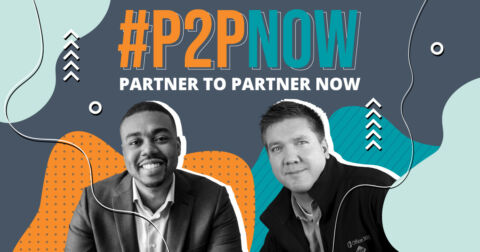For a partner, working with competent ISVs can make all the difference in the world when it comes to satisfying a customer. That said, what exactly goes into effectively going to market with one or multiple ISVs? What should your strategy be like, and how can each party best benefit the other?
In this episode of P2PNow, we’ll dive deep into what you need to consider when going to market with ISVs.
Transcript
Christian: The question for this episode is: As a Partner, how do you effectively Go To Market (or GTM) with an ISV?
Sam: This is a very good question that many ISV’s don’t put enough time into deeply considering. We’re often concerned with getting as many partners as possible to sell our software. We want to make ourselves seem like the best game in town.
AvePoint just hosted our first Global Partner Advisory Council a few months back and we got some really good feedback on GTM motions specifically. Ultimately, it boils down to focusing less on making the ISV look good and more on equipping the partners to look good.
Christian: Fundamentally that makes a lot of sense! Partners are in fact the ones that have to “sell” their solution. They may have multiple ISVs they work with to achieve this goal.
It’s not about any one magical solution, it’s about creating a holistic story to set the partner apart from the pack.
Sam: Exactly. As an ISV, we have to accept our position as a slice of cheese on the Partner’s solution sandwich. Clearly we want to be the best piece of cheese there is by equipping the partner with the collateral and information they need. But we also want to leave room to ensure the customer is clear that it’s the partner’s unique solution.
Christian: Absolutely. So how does an ISV go about creating a GTM strategy with a partner?
Sam: Well, the core of this is creating a solid “Better Together” story. There needs to be a deep business justification to recommend a solution for a problem. One of the biggest wastes of time in business is attempting a campaign solely for a reason like members of the ISV and Partner team “like” each other. Keep the customer’s needs first.
Next, ISVs have to provide the specifics on how their solutions help. Then they can allow the partner to add their voice.
Christian: What’s the best way for an ISV to provide that to their partners?
Sam: We’ve found that providing the technical copy on our solutions in a simple Word doc is most effective. Instead of providing a “complete” brochure.
In reality, most sophisticated partners have their own branding guidelines when it comes to presentations or proposals. ISVs need to allow the Partner to determine what the presentation layer looks like.
Christian: Got it. Keep it simple. Stick to the facts. Allow the Partner to incorporate the ISVs tool into their offering.
Sam: Exactly. Lastly, as an ISV there will be times you have specific campaigns you want your partners to run. If there is a specific message an ISV would like to convey to a Partner’s customer, the ISV needs to have a heavy hand it training the Partner’s team on that message.
They need to schedule specific trainings times, coordinate calls with marketing to build specific materials, and set specific desired metrics/outcomes.
Christian: I’d agree. ISVs might have grand plans, but “co-marketing” means that both organizations need to put in effort the more complex the GTM strategy is.
Sam:
- Correct. So, if you want to run more GTMs as an ISV.
- Keep them simple.
- Do as much of the leg work as possible to ensure your message is digestible.
Christian: Agreed. So, to summarize:
- Understand what the Better Together Story is with your partnership.
- As an ISV, make put the Partner’s message first on your collateral.
- Create easy ways for Partners to get the marketing copy they need.
- If you’re going to go to market with the ISV’s message first, the ISV needs to put in the hours and co-market with the partner.
Sam: Yup! That’s about it. For anyone looking to learn more, check out AvePoint’s Partner Program at www.AvePoint.com/partners!


